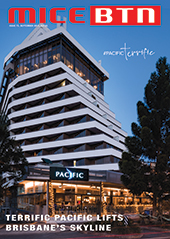SITA makes case for airport biometrics
- BTN News
- Friday, 05 April 2024
In 1930, there were only about 6,000 passengers travelling by air. By 1934, that figure had risen to just under 500,000.
Fast-forward to 2019 and it had exploded to four billion travellers and the International Air Transport Association (IATA) projected eight billion air travellers annually by 2040.
To prepare for this, 425 major construction projects (worth around US$450 billion) were under way at existing global airports.
Bricks and mortar infrastructure is only part of the solution though. Without state-of-the-art, adaptable digital services, airlines and airports will struggle to manage passenger numbers. This will affect the quality of the travel experiences they’re able to deliver.
Elsewhere, SITA’s biometrics white paper, ‘Face the Future’ highlights how the surge in air traveller numbers places extraordinary pressure on existing and new airports, national borders, and airline resources.
In short, “existing paper-based and manual travel infrastructure and legacy processes simply won’t be able to cope,” said Stefan Schaffner, vp of airports at SITA.
SITA says the solution is in harnessing the power of facial and fingerprint biometrics to create a smoother, safer, and slicker air transport experience.
The white paper features case studies like the Star Alliance Biometric initiative and the Indian government’s DigiYatra program.
Both cases use the end-to-end biometric passenger processing service branded SITA Smart Path.
“Smart Path biometrically enables every step of the passenger journey, from mobile enrolment to aircraft boarding and every point in between and beyond.
"With facial recognition across as many airport touch points as you need, it lets passengers manage their identity across their whole journey, in a unique and touch-less way. The final result is a radically improved travel experience,” said Schaffner.
The white paper goes on to outline more services using advanced biometrics technology. These include SITA Flex, a common-use passenger processing platform, and Border Management, which covers border control, risk intelligence and travel authorisation.










